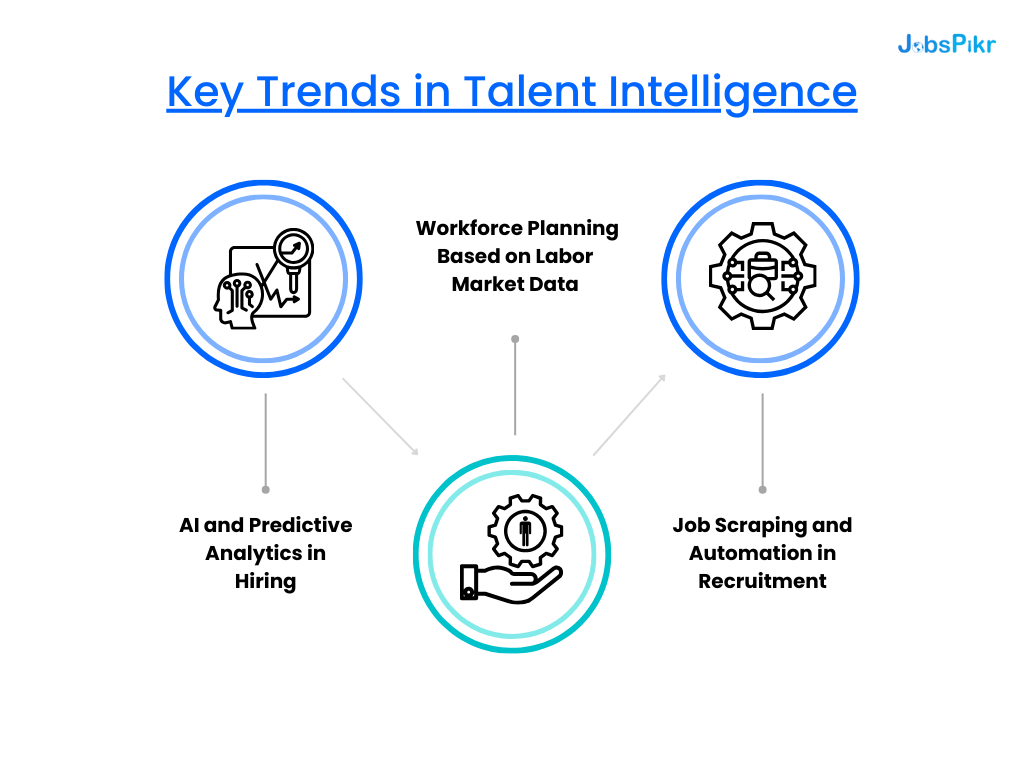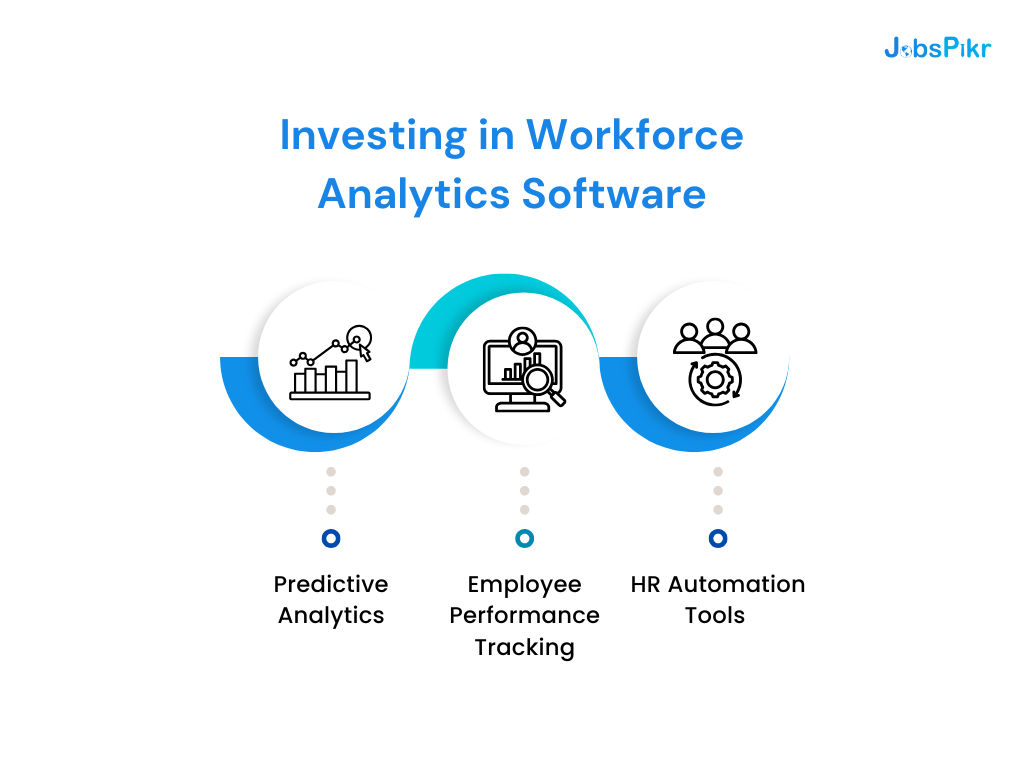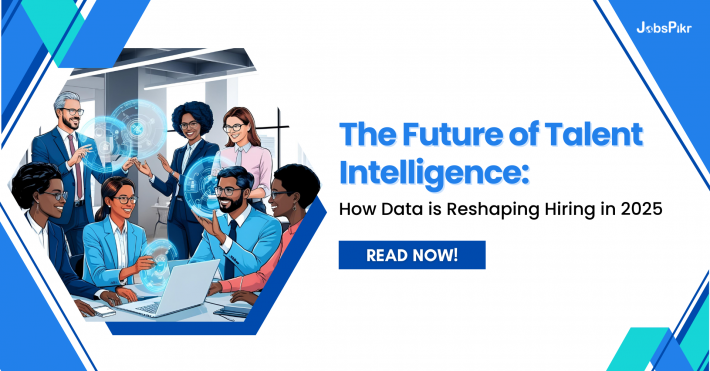The hiring landscape is undergoing a fundamental transformation, driven by data-driven talent intelligence. Traditional hiring processes—reliant on resumes, manual screening, and subjective decision-making—are being replaced by advanced analytics, AI, and real-time labor market insights. Companies are no longer just filling positions; they are strategically planning their workforce needs based on predictive data.
A LinkedIn report states that 72% of HR professionals believe that data-driven hiring decisions result in higher retention rates. Additionally, a study by Deloitte found that organizations using AI-driven recruitment tools reduce time-to-hire by 40%. In 2025, data-driven talent intelligence will be at the core of workforce planning, enabling companies to identify skills gaps, predict hiring trends, and enhance recruitment efficiency.
Let’s explore the key trends shaping this shift and how businesses can adapt to stay ahead.
Key Trends in Talent Intelligence

1. AI and Predictive Analytics in Hiring
Artificial intelligence (AI) is revolutionizing recruitment by automating candidate sourcing, screening, and even interview processes. AI-powered tools analyze large volumes of resumes, match candidates based on skills, and predict their success within a company.
- Resume Screening Automation: AI-driven applicant tracking systems (ATS) can filter resumes based on predefined criteria, reducing hiring bias and increasing efficiency.
- Predictive Hiring Models: Companies use AI to analyze historical hiring data, performance metrics, and attrition rates to predict which candidates are more likely to excel.
- Conversational AI for Interviews: AI chatbots and virtual assistants conduct initial interviews, assess communication skills, and rank candidates before human intervention.
According to Gartner, by 2025, 60% of large enterprises will use AI-based talent intelligence to enhance recruitment strategies. As AI becomes more sophisticated, it will not only identify the right candidates but also forecast hiring needs months in advance.
2. Workforce Planning Based on Labor Market Data
Data-driven workforce planning enables businesses to make informed hiring decisions based on real-time labor market trends. Instead of reacting to talent shortages, companies can proactively identify emerging skills, adjust compensation strategies, and allocate resources accordingly.
- Skills Gap Analysis: Organizations use labor market data to identify skill shortages and upskill existing employees.
- Competitive Benchmarking: Companies compare their hiring strategies with industry competitors to optimize job offers and attract top talent.
- Regional Hiring Insights: Businesses analyze location-based hiring trends to expand talent pools and explore remote work opportunities.
For instance, a report by the World Economic Forum found that 50% of employees will need reskilling by 2025 due to rapid technological advancements. Companies leveraging talent intelligence will be better positioned to fill these gaps efficiently.
3. Job Scraping and Automation in Recruitment
Job scraping—extracting job listings from various sources—provides recruiters with a competitive advantage by offering real-time insights into industry hiring patterns. By automating job data collection, companies can analyze trends, identify high-demand roles, and refine their hiring strategies.
- Competitive Intelligence: Monitoring competitors’ job postings helps businesses understand workforce expansions and talent acquisition strategies.
- Market Demand Analysis: By analyzing job listings, organizations can determine which skills are in demand and adjust their hiring plans accordingly.
- Recruitment Automation: Automated scraping tools reduce manual effort in sourcing candidates, allowing recruiters to focus on strategic hiring decisions.
With the rise of AI-powered job scraping solutions like JobsPikr, businesses can streamline their recruitment processes, access high-quality job data, and gain deeper labor market insights.
How Businesses Can Adapt
To stay ahead in this data-driven hiring landscape, organizations must adopt the right talent intelligence tools and strategies.
1. Leveraging Talent Intelligence APIs
Talent intelligence APIs provide businesses with real-time job market data, salary trends, and hiring patterns, enabling smarter decision-making. Companies can integrate these APIs with their HR software to:

- Access real-time labor market insights for workforce planning.
- Monitor salary trends to stay competitive in talent acquisition.
- Enhance candidate matching through AI-powered data analysis.
2. Using Real-Time Labor Market Insights for Decision-Making
Real-time labor market data helps businesses refine their hiring strategies by offering a comprehensive view of industry trends. Companies can use these insights to:

- Identify emerging job roles and adjust hiring strategies accordingly.
- Optimize compensation packages based on real-time salary data.
- Make data-driven diversity and inclusion decisions by analyzing workforce demographics.
3. Investing in Workforce Analytics Software
To fully leverage talent intelligence, companies need workforce analytics software that consolidates data from various sources and provides actionable insights. These platforms offer:

- Predictive analytics for hiring and retention strategies.
- Employee performance tracking to identify high-potential talent.
- HR automation tools to streamline recruitment workflows.
Conclusion
The future of hiring is data-driven, and talent intelligence is at the heart of this transformation. Companies that embrace AI, predictive analytics, and real-time labor market insights will outperform competitors in attracting, retaining, and developing top talent.
As recruitment becomes more complex, businesses must invest in talent intelligence APIs, job scraping tools, and workforce analytics software to stay ahead. Platforms like JobsPikr provide organizations with real-time job market data, enabling them to make informed hiring decisions and gain a competitive edge in 2025 and beyond.
To future-proof your talent acquisition strategy, start leveraging data-driven insights today. Explore how JobsPikr can help your business optimize hiring decisions and stay ahead in the evolving job market. Sign up today!pping into job market analytics is essential for businesses seeking to maintain a competitive edge. By understanding and leveraging this data, companies can make informed choices about hiring, expansion, and strategic planning.Ready to transform your approach to workforce planning and market analysis? Sign up for JobsPikr today and start leveraging the power of real-time job data to fuel your strategic growth.



